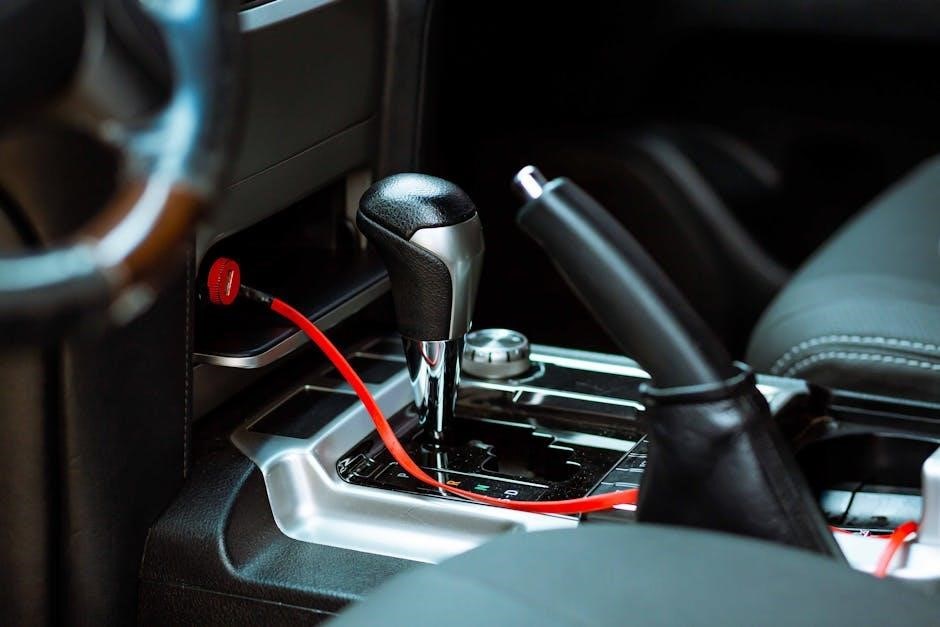Discover the ultimate t-shirt size guide to ensure a perfect fit. Learn how chest measurements, fabric type, and fit styles impact your choice. Avoid common mistakes and find your ideal size effortlessly with this comprehensive guide.
Understanding the Importance of Proper Fit
A proper-fitting t-shirt is essential for both comfort and style. Ill-fitting shirts can cause discomfort, restrict movement, or appear unflattering. A shirt that is too tight may feel restrictive, while one that is too loose can look sloppy. Proper fit ensures optimal comfort, allowing you to move freely and maintain a polished appearance. It also enhances confidence, as a well-fitting t-shirt complements your body type. Understanding the importance of proper fit helps you make informed decisions when selecting sizes, ensuring a balance of style and comfort.
Overview of T-Shirt Sizing Charts
T-shirt sizing charts provide a standardized guide to help determine the best fit. These charts typically include measurements for chest, waist, and shirt length, varying by brand and style. While some brands use numeric sizes (S, M, L), others offer detailed measurements in inches or centimeters. International sizing differences, such as US, European, and Asian standards, also play a role. Understanding these charts is crucial for selecting the right size, ensuring comfort, and achieving the desired fit, whether you prefer a regular, slim, or tall style.

How to Measure Yourself for the Perfect Fit
Measure your chest, waist, and hips with a flexible tape measure. Ensure the tape is level and not too tight for accurate sizing.
Chest Measurement: The Key to Choosing the Right Size
Accurate chest measurement is essential for selecting the perfect t-shirt size. Measure around the fullest part of your chest, just under the armpits, with a flexible tape measure. Ensure the tape is level and not too tight. This measurement directly corresponds to the sizing chart, helping you determine whether a small, medium, large, or other size is best. Remember, fabric type and stretch may affect fit, so always refer to the brand’s specific guidelines for precise sizing.
- Measure under the armpits for the most accurate reading.
- Fabric stretch and fit style (slim, regular, or tall) can impact size choice.
Waist and Hip Measurements: Additional Factors for Accuracy
While chest measurements are primary, waist and hip measurements add precision to your t-shirt size selection. Measure your waist at its narrowest point and hips at their widest to ensure a balanced fit. These measurements help determine the shirt’s comfort around the midsection, especially for styles like slim or tall fits. Combining these with chest size ensures a more accurate fit, avoiding overly tight or loose clothing. Always measure with a straight, horizontal tape measure for the best results.
- Waist: Measure at the narrowest point, typically where trousers sit.
- Hips: Measure at the widest part, keeping feet close together.

Popular T-Shirt Fit Styles
Explore the main t-shirt fit styles, including regular, slim, and tall fits, each catering to different body types and fashion preferences for a personalized look.
Regular Fit: The Classic T-Shirt Style
The regular fit is a timeless choice, offering a comfortable, relaxed silhouette that isn’t too tight or boxy. Perfect for everyday wear, it suits most body types and preferences, providing ease of movement while maintaining a classic look. This style is ideal for those who prefer a traditional fit that’s neither slim nor oversized. Its universal appeal makes it a popular choice for casual outings and layering. Whether you’re looking for versatility or simplicity, the regular fit remains a wardrobe staple for its balanced comfort and style.
Slim Fit: Tailored for a Modern Look
The slim fit T-shirt offers a contemporary, tailored appearance that skims the body without being overly tight. Designed for a modern aesthetic, it’s perfect for those seeking a stylish, form-fitting option. This fit is slightly narrower in the chest and sleeves compared to the regular fit, creating a sleek, streamlined look. Ideal for layering or making a fashion statement, the slim fit is a great choice for individuals who prefer a more polished, trendy silhouette while maintaining comfort and flexibility.
Tall Fit: Designed for Longer Length and Sleeve Adjustments
The tall fit T-shirt is specifically crafted for individuals with a taller frame, featuring extended length and proportionally longer sleeves. This style ensures coverage and comfort, eliminating the need for alterations. Designed to accommodate longer torsos, the tall fit maintains a flattering silhouette without compromising on style. It’s ideal for those seeking a more tailored look while addressing the unique needs of taller body types, offering both functionality and modern aesthetics in one design.

Brand-Specific Sizing Charts
Brand-specific sizing charts vary by manufacturer, such as Gildan and Bella Canvas, offering unique measurements. Always consult the brand’s chart for precise sizing to ensure the best fit.
Gildan and Bella Canvas: Common Measurements and Differences
Gildan and Bella Canvas offer distinct sizing approaches. Gildan’s unisex shirts often feature broader chest measurements, while Bella Canvas focuses on a tailored fit with precise chest and body length. Both brands provide detailed charts, but Gildan’s sizes tend to run larger. Bella Canvas emphasizes a slimmer cut, making it ideal for a modern look. Understanding these differences helps in selecting the right size for a comfortable and stylish fit. Always refer to the specific brand’s chart for accurate measurements.
International Sizing: Comparing US, European, and Asian Standards
Understanding international sizing standards is crucial for a perfect fit. US sizes often run larger than European and Asian sizes, with differences in chest and waist measurements. For example, a US Medium may equate to an EU Medium but fit differently due to regional sizing norms. Asian sizes tend to be more fitted, while European sizes may have longer lengths. Always consult brand-specific charts, as global sizing variations can significantly affect the fit of your t-shirt.
How to Choose the Right T-Shirt Size
Ensure a perfect fit by matching your chest measurements to sizing charts and considering your preferred fit style; Check brand-specific charts and fabric stretch for accuracy.
Using Body Measurements to Match Sizing Charts
Accurate body measurements are key to selecting the right t-shirt size. Measure your chest around the fullest part, ensuring the tape is horizontal. For men, this typically determines the size, while women should also consider waist and hip measurements. Compare these measurements to brand-specific sizing charts, as sizes can vary between brands. Pay attention to international sizing differences, such as US, European, or Asian standards. Using a t-shirt size calculator or comparing your measurements to a favorite fitting shirt can also help ensure accuracy and comfort.
Fabric Type and Stretch: Factors Affecting Fit
Fabric type and stretch significantly impact how a t-shirt fits. Cotton, polyester, and blended fabrics offer varying levels of breathability and elasticity. Stretchy materials like elastane provide a snug fit, while 100% cotton may shrink slightly after washing. Heavier fabrics, such as those used in tall or athletic fits, offer durability but less drape. Consider the fabric’s weight and stretch when choosing a size, as these factors influence comfort and how the shirt molds to your body. This ensures a flattering and comfortable fit tailored to your preferences.
Common Mistakes When Selecting T-Shirt Sizes
Common mistakes include ignoring body type and fit preferences, leading to ill-fitting shirts. Many also fail to account for fabric shrinkage or differences in brand sizing standards.
Ignoring Body Type and Fit Preferences
One major mistake is neglecting your body type and fit preferences. Petite individuals may find regular fits too bulky, while tall or athletic builds might struggle with insufficient length or tightness. Ignoring these factors can lead to shirts that are either too tight or too loose, compromising both comfort and style. Understanding your body type and how it aligns with fit styles (e.g., slim, regular, or tall) is crucial for a flattering and comfortable fit. Always consider these elements when selecting sizes.
Not Considering Shrinkage of Fabrics
Overlooking fabric shrinkage is a common error that can ruin the fit of your t-shirt. Natural fibers like cotton often shrink after washing, especially if not preshrunk. This can cause a shirt that initially fits perfectly to become too tight or short. Always check care labels for shrinkage information and consider sizing up if the fabric is prone to shrinking. Ignoring this factor may lead to discomfort and alterations, so it’s essential to account for potential shrinkage when choosing your size.
T-Shirt Size Guide for Specific Body Types
Find the perfect fit for petite, tall, or athletic builds. Petite frames may prefer shorter lengths, while tall individuals need longer shirts. Athletic builds often require broader chest measurements. Use sizing charts to match your body type for optimal comfort and style.
Petite, Tall, and Athletic Builds: Finding the Best Fit
For petite frames, opt for shorter lengths and slim-fit styles to avoid overwhelming your silhouette. Tall individuals benefit from longer shirts with proportionally adjusted sleeve lengths. Athletic builds require broader chest measurements and slightly longer shirts to accommodate muscle mass. Consider body type-specific sizing charts to ensure comfort and style. Measure chest, waist, and hip to match your body type with the ideal fit. This tailored approach ensures your t-shirt looks great and feels comfortable all day long.

Creating Your Own T-Shirt Size Chart
Use body measurements to craft a custom t-shirt size chart. Measure chest, waist, and hip, then compare with standard sizes. Tools like Placeit templates simplify the process, ensuring a perfect fit tailored to your needs.
Using Placeit Templates for Custom Measurements
Placeit templates offer a convenient way to create custom t-shirt size charts. Simply input your measurements, such as chest, waist, and hip, and the template generates a personalized chart. This tool is ideal for ensuring a precise fit, especially for unique body types or specific styles. With user-friendly interfaces and real-time previews, Placeit simplifies the process of designing a tailored size guide. It’s perfect for individuals or businesses looking to provide accurate sizing options, saving time and reducing errors in measurement calculations.
Caring for Your T-Shirt to Maintain Fit
Proper care ensures your t-shirt retains its shape and size; Wash inside out in cold water, avoid hot dryers, and don’t over-dry to prevent shrinkage and fabric wear.
Washing and Drying Tips to Prevent Shrinkage
To maintain your t-shirt’s fit, wash it inside out in cold water using a gentle detergent. Avoid fabric softeners, as they can affect breathability. Gently reshape the garment while damp to preserve its dimensions. Air-dry by laying it flat or hanging it, avoiding direct sunlight. Never use hot water or dryers, as heat causes shrinkage. If ironing is necessary, use a low setting and avoid the neckline or logos. Proper care ensures your t-shirt stays comfortable and retains its size.
Finding the perfect t-shirt fit ensures comfort and style. Use size charts, consider fabric type, and measure accurately for confidence. Your ideal t-shirt is a wardrobe staple. Happy shopping!
Final Tips for Ensuring a Comfortable and Stylish Fit
For a seamless shopping experience, always measure yourself accurately and consider fabric stretch. Avoid sizing mistakes by checking brand-specific charts and reading reviews. Opt for styles that flatter your body type, whether petite, tall, or athletic. Don’t forget to account for potential shrinkage and choose high-quality materials for durability. By combining these strategies, you’ll find a t-shirt that offers both comfort and style, making it a timeless addition to your wardrobe.


















































































